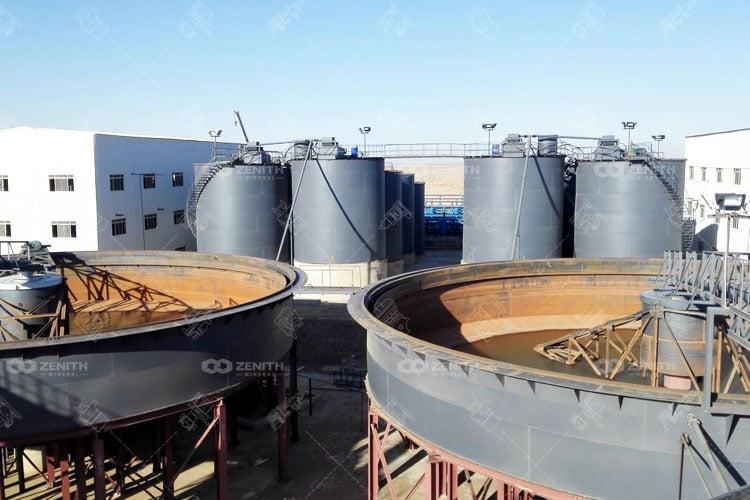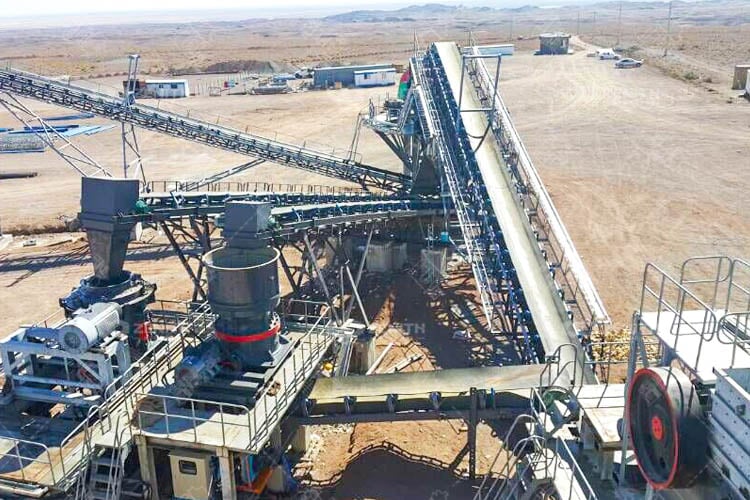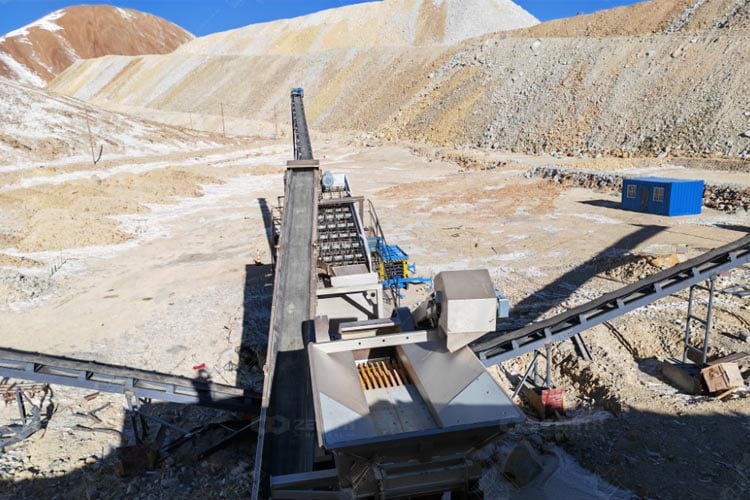Copper Ore Leaching Plant in the Congo
The Democratic Republic of the Congo (DRC) is synonymous with vast mineral wealth, holding a significant portion of the world's cobalt and immense reserves of copper, often referred to as "red gold." Harnessing this potential requires sophisticated and efficient mineral processing technologies.
This article delves into the technical specifics and operational framework of a modern 2000t/d copper ore dressing plant in the Congo, utilizing a leaching-based extraction method to recover valuable metals.
Project Overview
- Country: Congo
- Ore Type: Complex Copper, Lead, and Zinc sulphide/oxide ore
- Plant Capacity: 2,000 tonnes per day (t/d)
- Core Process: Leaching (Specifically, Acid Leaching for Copper, followed by separation for Lead and Zinc)
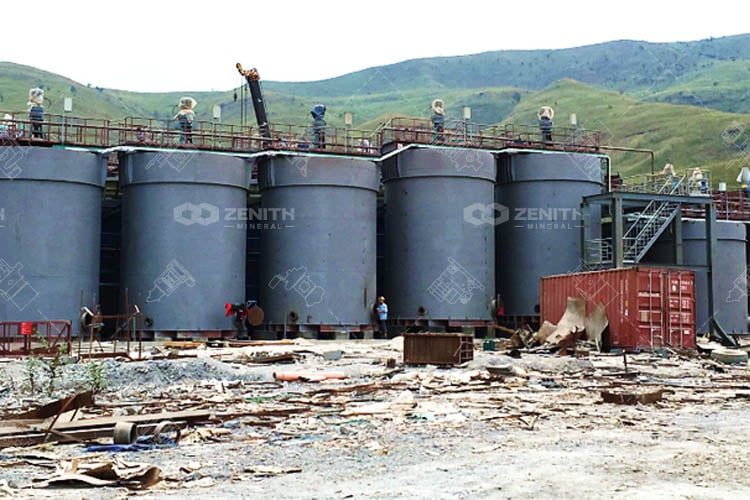
Ore Types and Characteristics
The ores processed include copper, lead, and zinc-bearing minerals, often found in polymetallic deposits. These ores typically present as sulfide and oxide minerals, with variable grades and complex mineralogy that necessitate tailored beneficiation techniques.
Copper Minerals
Copper in Congo’s deposits is primarily present as chalcopyrite (CuFeS₂), bornite (Cu₅FeS₄), and chalcocite (Cu₂S), with oxide copper minerals such as malachite and azurite in weathered zones. The presence of sulfide minerals favors flotation and leaching methods, while oxide ores are more amenable to hydrometallurgical treatment.
Lead and Zinc Minerals
Lead and zinc commonly occur as galena (PbS) and sphalerite (ZnS), respectively. These sulfide minerals often coexist with copper minerals in complex ores, requiring selective processing to recover each metal efficiently.
Ore Complexity
The polymetallic nature and mineral intergrowths in the ores require careful liberation through crushing and grinding before beneficiation. Variations in mineral composition and grain size distribution influence the choice of processing methods and reagent schemes.
3. Why Choose Copper Ore Leaching?
Leaching is chosen as the main beneficiation method due to its effectiveness in extracting metals from oxide and low-grade sulfide ores, which are difficult to process via conventional flotation alone. Hydrometallurgical leaching offers advantages such as lower energy consumption, simpler equipment, and the ability to handle complex ores.
Types of Leaching
- Heap Leaching: Suitable for low-grade ores, where crushed ore is piled and irrigated with leaching solutions to dissolve metals.
- Tank Leaching: Involves agitation tanks for finer ore particles, providing faster kinetics and better control.
- In-situ Leaching: Less common in Congo, involves leaching directly in the ore body. For this plant, a combination of crushing, grinding, and tank leaching is employed to optimize metal recovery.
Leaching Agents
- Sulfuric Acid: Commonly used for copper oxide and secondary sulfide ores.
- Bacterial Leaching: Bioleaching can enhance recovery by oxidizing sulfide minerals.
- Other Chemicals: Ferric sulfate, chloride solutions may be used depending on ore characteristics.
Copper Ore Leaching Plant Processing Flow:A Step-by-Step
1. Crushing and Screening:
The run-of-mine (ROM) ore, which can be up to 1 meter in diameter, is first reduced in size through a three-stage crushing circuit.
- Primary Crushing: A robust jaw crusher reduces the ore to below 200mm.
- Secondary Crushing: A cone crusher further reduces the material to about 50mm.
- Tertiary Crushing: A second cone crusher or a high-pressure grinding roll (HPGR) creates a final product size of below 25mm. This finely crushed ore is then screened to ensure optimal size for the next stage.
2. Agglomeration and Curing (A Critical Pre-Leach Step):
The crushed ore is fed into a rotating agglomeration drum. Here, concentrated sulfuric acid and water are sprayed onto the ore. This serves two vital purposes:
- Agglomeration: The fine particles adhere to coarser ones, forming small, porous pellets. This prevents fine material from compacting and ensures uniform percolation of the leach solution later.
- Curing: The acid begins to react with the copper oxide minerals during a 24-48 hour curing period on a lined pad. This pre-reaction significantly enhances the overall copper recovery efficiency.
3. Stacking and Leaching:
The agglomerated and cured ore is systematically stacked into large, lined leach pads using a conveyor and a specialized stacker. The leaching process involves:
- Solution Application: A drip irrigation system or sprinklers evenly distribute a diluted sulfuric acid solution (the lixiviant) over the ore stack.
- Percolation: The solution trickles down through the stacked ore by gravity, dissolving the copper and forming a pregnant leach solution (PLS) rich in copper sulfate.
- Collection: The PLS drains from the pad and is collected in a high-density polyethylene (HDPE) lined pond.
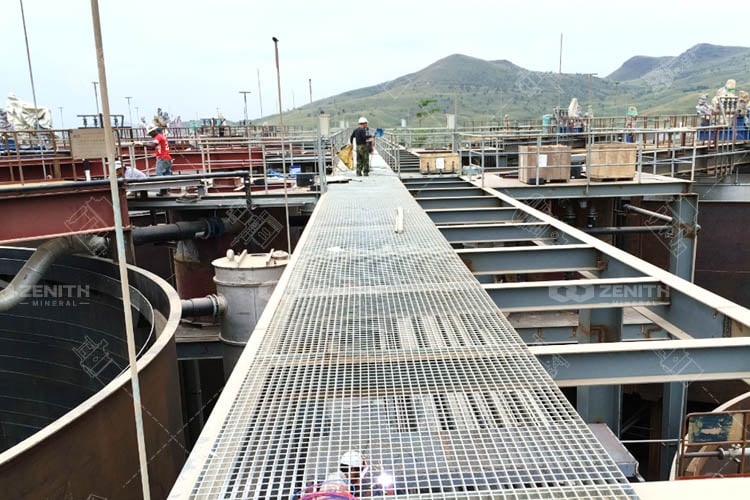
4. Solvent Extraction (SX):
This is where the magic of purification and concentration happens. The PLS is pumped to the SX plant, which consists of a series of mixer-settler units.
- Extraction: The PLS is mixed with an organic solvent containing a selective chemical reagent (extractant) that has a high affinity for copper. The copper ions transfer from the aqueous (water) phase to the organic phase.
- Separation: The two liquids are allowed to separate in a settler tank. The now copper-loaded organic phase proceeds, while the stripped aqueous solution (raffinate), now lean in copper, is recirculated back to the leach pads.
5. Electrowinning (EW):
The final step in producing pure copper metal.
- Transfer: The copper-rich organic solution is mixed with a strong acid electrolyte in a separate mixer-settler stage. This causes the copper to transfer back into an aqueous phase, now creating an incredibly rich and pure copper sulfate electrolyte.
- Electrolysis: This electrolyte is circulated through electrowinning cells. These cells contain inert lead-alloy anodes and stainless steel cathodes. When direct current (DC) is applied, copper ions are plated as pure (99.99%+) cathode copper onto the stainless steel blanks. After 5-7 days, the cathodes are harvested, ready for market.
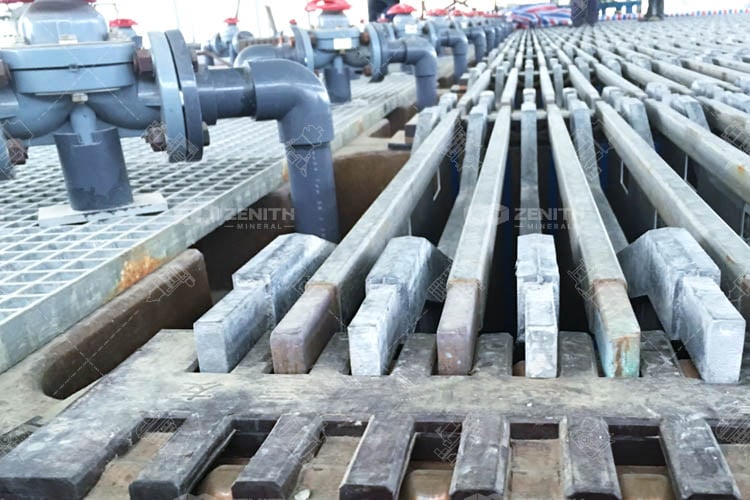
6. Recovery of Lead and Zinc:
The leaching process primarily targets copper. The residual solids on the leach pad (leached residue), still containing the lead and zinc sulfides, are carefully managed.
- Washing and Neutralization: The residue is washed to remove residual acid and neutralized to ensure environmental safety.
- Tailings Disposal: The neutralized residue is transferred to a secure, lined tailings storage facility (TSF). This material is not waste but a potential future resource. As market conditions and technology evolve, this stockpiled material can be reprocessed using flotation to recover the lead and zinc concentrates, adding significant future value to the operation.
Economic and Operational Advantages of the Leaching Method
- Lower Capital Cost: Compared to a traditional concentrator and smelter complex, a leaching/SX/EW plant has a significantly lower initial investment.
- Direct Metal Production: The plant produces final, saleable LME-grade copper cathode on-site, eliminating the need for costly concentrate transport and smelter treatment charges.
- Flexibility: Well-suited to the mixed oxide-sulfide ores typical of the Congo, which are often challenging and expensive to process via flotation alone.
- Higher Recovery for Oxides: Leaching can achieve recoveries of over 90% for copper oxide minerals, which might be lost to tailings in a standard flotation circuit.
The copper ore dressing plant in Congo, with a capacity of 2000 t/d and employing leaching technology, exemplifies modern mineral processing tailored to the region’s complex polymetallic ores. By integrating advanced crushing, grinding, and hydrometallurgical techniques, the plant optimizes metal recovery while addressing technical and environmental challenges. This project not only enhances Congo’s mineral resource utilization but also contributes to sustainable economic development.



